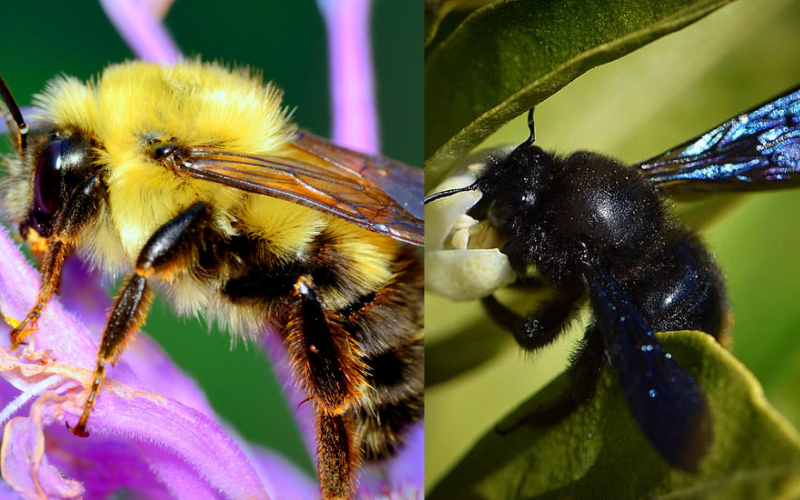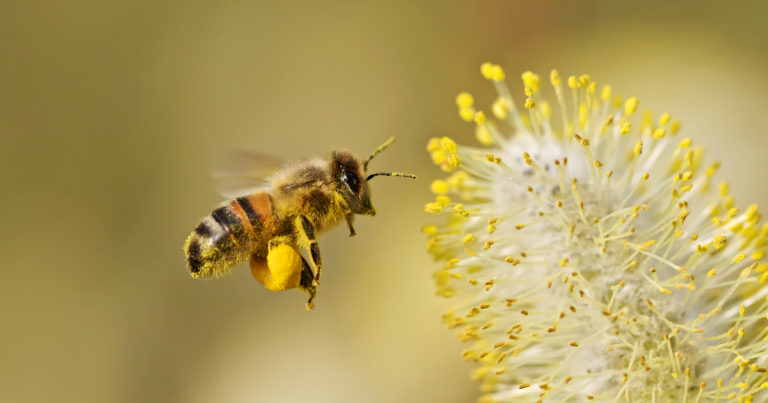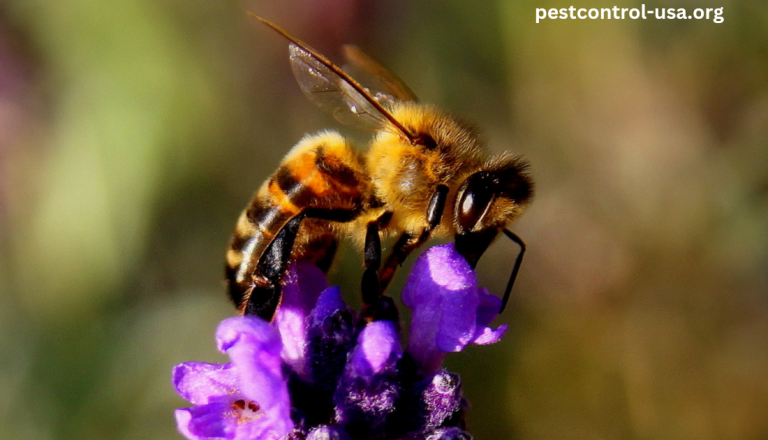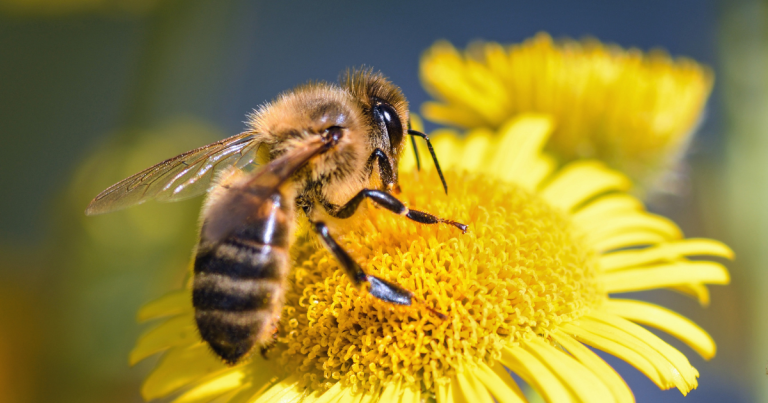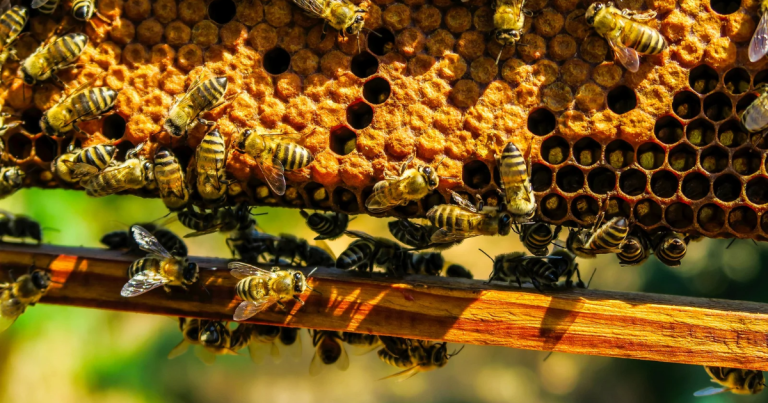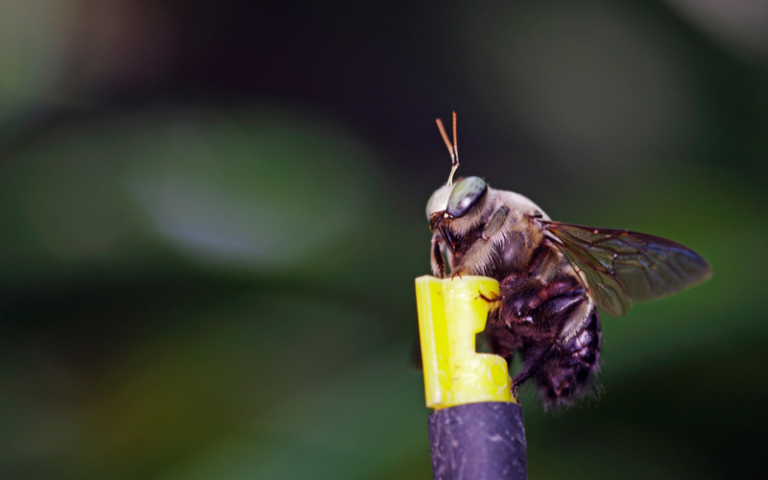Bumble bees and carpenter bees are both types of bees that are native to North America and can be found in a variety of habitats across the continent. Both species are important pollinators and play a vital role in maintaining the health and balance of ecosystems. However, there are also many differences between bumble bees and carpenter bees, including their physical appearance, behavior, and habitat preferences. In this blog post, we will take a closer look at the similarities and differences between these two types of bees, so that you can better understand and appreciate these fascinating insects.
Physical Characteristics
Bumble bees are larger than carpenter bees, with an average size ranging from 0.5 to 1 inch in length. They are typically round and fuzzy, with a thick layer of hairs covering their body. Bumble bees can be a variety of colors, including black, yellow, orange, and red, and often have distinctive patterns of stripes or bands on their abdomen.
Carpenter bees are smaller than bumble bees, with an average size ranging from 0.5 to 0.75 inches in length. They are typically elongated and shiny, with a smooth and sleek appearance. Carpenter bees are typically black or metallic blue in color, and do not have the distinctive stripes or bands that are commonly found on bumble bees.
In terms of distinctive features, bumble bees have a pair of antennae on the top of their head, which they use to sense their surroundings and communicate with other bees. Carpenter bees also have antennae, but they are located on the underside of their head, near their mouth. Bumble bees also have a long, protruding tongue that they use to collect nectar from flowers, while carpenter bees do not.
Habits and Behaviors
Bumble bees and carpenter bees have some similar habits and behaviors, but there are also some notable differences between the two.
Both bumble bees and carpenter bees are important pollinators, feeding on nectar and pollen from a wide variety of flowers. They use their long tongues to collect nectar, which they store in a special stomach called a “honey stomach” and bring back to their nest to feed to their young. In addition to nectar, bumble bees and carpenter bees also feed on pollen, which they collect with the hairs on their body and legs.
Bumble bees and carpenter bees also have different nesting habits. Bumble bees typically build their nests underground, in abandoned rodent burrows or other hidden locations. They are social insects, living in colonies that can range in size from a few dozen to several hundred individuals. Each colony is led by a single queen bumble bee, who is responsible for laying eggs and raising the young.
Carpenter bees, on the other hand, are solitary insects and do not live in colonies. They build their nests by tunneling into wood, using their strong mandibles to chew through the wood and create a series of tunnels and chambers. Carpenter bees prefer to nest in soft woods, such as pine, cedar, and redwood, and they often reuse the same nest year after year.
In terms of social behavior, bumble bees are generally more social than carpenter bees. Bumble bees communicate with each other using a variety of vocalizations and body language, and they work together to gather food, build and maintain their nest, and care for their young. Carpenter bees are more solitary and do not engage in the same level of social behavior as bumble bees.
Range and Habitat
Bumble bees and carpenter bees can be found in a variety of habitats across North America, but they have different preferences when it comes to their range and habitat.
Bumble bees are found throughout most of the United States and Canada, with the exception of some desert and tropical regions. They are typically found in open, grassy areas, such as meadows, fields, and gardens, and they are often attracted to flowers that grow in these areas. Bumble bees are also found in forested regions, where they feed on nectar and pollen from a variety of flowering plants.
Carpenter bees are also found throughout most of the United States and Canada, with the exception of some cold, dry regions in the north. They are typically found in areas with a plentiful supply of soft woods, such as pine, cedar, and redwood, which they use to build their nests. Carpenter bees are often found in gardens, parks, and other landscaped areas where there are trees and wooden structures that they can use for nesting.
In terms of the types of environments that bumble bees and carpenter bees prefer, bumble bees are more adaptable and can thrive in a wide range of habitats. They are able to survive in cold and hot temperatures and can tolerate a wide range of moisture levels. Carpenter bees, on the other hand, prefer warmer temperatures and are more sensitive to changes in moisture levels. They are typically found in areas with a moderate climate, where the temperature and humidity are relatively stable.
Importance to Humans and the Environment
Bumble bees and carpenter bees are both important pollinators, playing a vital role in maintaining the health and balance of ecosystems. Pollinators, such as bees, butterflies, and hummingbirds, help to fertilize flowers and plants by transferring pollen from one plant to another. This process is essential for the reproduction of many plant species and is necessary for the production of a wide range of foods and other products that we rely on.
Bumble bees and carpenter bees are important pollinators of many types of flowers and plants, including fruits, vegetables, nuts, and grains. In fact, approximately one-third of the food we consume is directly or indirectly dependent on pollinators, making these insects vital to our food supply.
In addition to their role as pollinators, bumble bees and carpenter bees also have an impact on ecosystems in other ways. For example, bumble bees are important predators of insects that can damage crops and other plants, and they help to control these pest populations. Carpenter bees, on the other hand, are important decomposers, feeding on wood and helping to break down dead trees and other organic matter.
Despite their importance, bumble bees and carpenter bees are facing a number of threats to their populations. Some of the main threats to these insects include habitat loss, pesticide use, and climate change. These factors can all contribute to declines in bee populations and can have serious consequences for the health and balance of ecosystems.
It is important that we take steps to protect bumble bees and carpenter bees and ensure that their populations remain healthy. This can involve things like conserving and restoring habitats, reducing our use of pesticides, and taking action to address climate change. By taking these steps, we can help to preserve these important pollinators and the vital role they play in our world.
Conclusion
Bumble bees and carpenter bees are two fascinating insects that are native to North America and play a vital role in the health and balance of ecosystems. Although they have some similarities, such as their role as pollinators and their diet, there are also many differences between these two types of bees.
Bumble bees are larger, rounder, and fuzzier than carpenter bees, and they have distinctive stripes or bands on their abdomen. They are social insects, living in colonies and working together to gather food, build and maintain their nest, and care for their young. Bumble bees are typically found in open, grassy areas, such as meadows and fields, and they are able to thrive in a wide range of habitats.
Carpenter bees are smaller, more elongated, and shinier than bumble bees, and they do not have the same distinctive markings on their abdomen. They are solitary insects, building their own nests and raising their young alone. Carpenter bees are typically found in areas with a plentiful supply of soft woods, and they prefer warmer temperatures and more stable moisture levels.
Both bumble bees and carpenter bees are important pollinators and have an impact on ecosystems in other ways, but they are also facing a number of threats to their populations. It is important that we take steps to protect these insects and ensure that their populations remain healthy.
If you are interested in learning more about bumble bees and carpenter bees, there are many resources available that can provide more information on these fascinating insects. Consider visiting a local nature center or botanical garden, joining a local beekeeping group, or doing some research online to learn more about these important pollinators.

